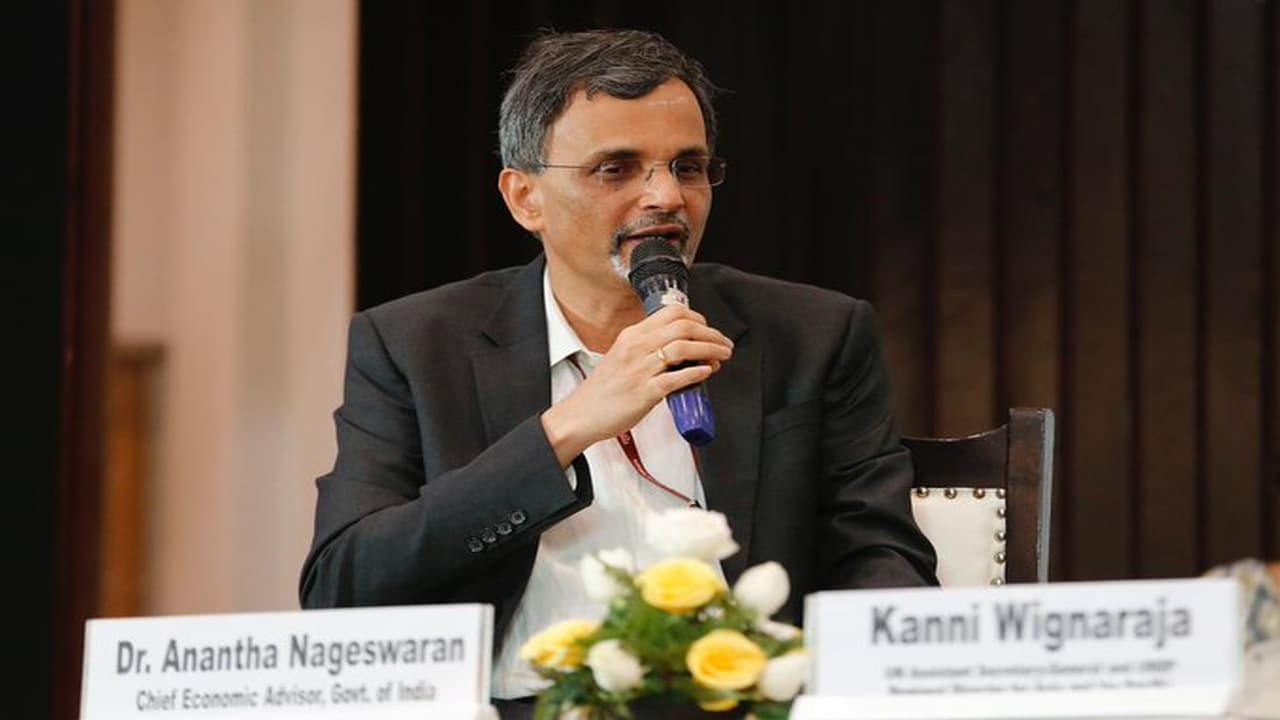What is the story about?
India's Chief Economic Adviser (CEA) V Anantha Nageswaran has said India may be more likely to see positive growth surprises than negative ones, even as global tariff and geopolitical uncertainties persist.
Speaking at an AIMA event on Wednesday, September 10, the CEA said next-generation reforms must come from both the government and the private sector to sustain India’s growth momentum.
He said that India’s real GDP grew 7.8% in the first quarter of FY26, supported by higher economic activity and not merely low inflation. Early Q2 data, covering July and August, also signals continued momentum,
pointing to robust growth, he added.
According to him, India remains the only G20 economy to sustain strong growth over the last four years post-COVID. He mentioned that reforms of the last decade, from digital and physical infrastructure to SME formalisation, are beginning to show measurable impacts on growth and employment.
Key policy measures such as the Insolvency and Bankruptcy Code, GST, Real Estate Regulation Act, public sector bank consolidation, and recent tax process reforms and GST rate cuts have together improved
the ease of doing business, he said.
The CEA pointed out that India recently secured its first sovereign credit rating upgrade in 30 years, moving from BBB- to BBB, reflecting growing global confidence in the economy. Government borrowing costs have fallen significantly, with the 10-year loan rate declining from 9% to 6.4%, boosting macroeconomic stability and lowering financing costs for businesses. Stable and low energy prices over the past four years have further supported growth by keeping inflationary pressures in check.
He said fiscal prudence remains central to economic management, with India on track to meet its fiscal deficit target of 4.4% this year.
The CEA mentioned that competitiveness and innovation will be the next key growth drivers, with productivity forming the foundation of sustainable expansion.
Two high-level government committees are currently working on deregulation and reforms under the “Viksit Bharat” mission, intending to reduce what he termed the “cost of being honest” for businesses.
He also urged the private sector to focus on productivity and innovation rather than protectionism, warning that growth must come from expanding the economic pie, not redistributing it.
Balancing rapid technology adoption with job creation for India’s young workforce would remain critical, he said, framing structural reforms as a partnership between government and private enterprise to secure long-term growth.
The CEA also clarified that India is not part of any international initiative seeking to create an alternative currency to the US dollar.
Speaking at an AIMA event on Wednesday, September 10, the CEA said next-generation reforms must come from both the government and the private sector to sustain India’s growth momentum.
He said that India’s real GDP grew 7.8% in the first quarter of FY26, supported by higher economic activity and not merely low inflation. Early Q2 data, covering July and August, also signals continued momentum,
According to him, India remains the only G20 economy to sustain strong growth over the last four years post-COVID. He mentioned that reforms of the last decade, from digital and physical infrastructure to SME formalisation, are beginning to show measurable impacts on growth and employment.
Key policy measures such as the Insolvency and Bankruptcy Code, GST, Real Estate Regulation Act, public sector bank consolidation, and recent tax process reforms and GST rate cuts have together improved
The CEA pointed out that India recently secured its first sovereign credit rating upgrade in 30 years, moving from BBB- to BBB, reflecting growing global confidence in the economy. Government borrowing costs have fallen significantly, with the 10-year loan rate declining from 9% to 6.4%, boosting macroeconomic stability and lowering financing costs for businesses. Stable and low energy prices over the past four years have further supported growth by keeping inflationary pressures in check.
He said fiscal prudence remains central to economic management, with India on track to meet its fiscal deficit target of 4.4% this year.
The CEA mentioned that competitiveness and innovation will be the next key growth drivers, with productivity forming the foundation of sustainable expansion.
Two high-level government committees are currently working on deregulation and reforms under the “Viksit Bharat” mission, intending to reduce what he termed the “cost of being honest” for businesses.
He also urged the private sector to focus on productivity and innovation rather than protectionism, warning that growth must come from expanding the economic pie, not redistributing it.
Balancing rapid technology adoption with job creation for India’s young workforce would remain critical, he said, framing structural reforms as a partnership between government and private enterprise to secure long-term growth.
Do you find this article useful?












